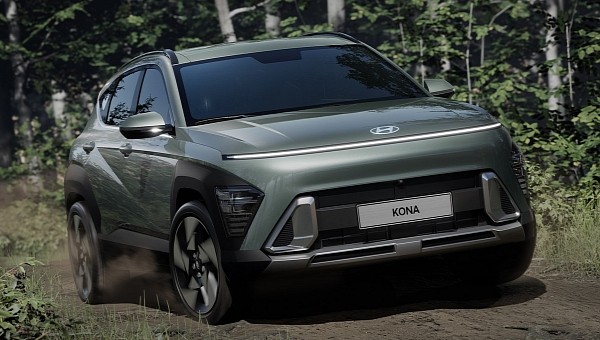Hyundai once said that it would not sell the Kona in Korea anymore because of the fire incidents it faced. It was possibly talking only about the last generation. Although the company did not confirm if the second generation will also be sold in its home country, that is very probable, mainly because it now departs from an EV platform to offer ICE derivatives.
It will be interesting to see how the first car that inverts this logic behaves. EVs made from architectures developed for combustion engines are usually mediocre, lacking in efficiency, range, and a series of other crucial standards for electric cars. A platform conceived to have a battery pack may also create below-average ICE vehicles. The question is if people will care enough to make that matter.
Curiously, Hyundai chose to give the Kona the same derivatives it previously had: EV, hybrid electric vehicle (HEV), ICE, and the N version, which will be powered solely by a combustion engine. With an electric architecture, it could probably offer a pretty competent plug-in hybrid which a more than reasonable electric-only range. Why isn’t it available? Hyundai did not even talk about it.
The new Kona will feel pretty well integrated with its IONIQ siblings: the styling is very similar to that of its EV brothers. Hyundai calls these elements “parametric surfaces.” The lighting signature contains the “pixels” we first saw in the Hyundai 45, and that made it into production with the IONIQ 5. Even the interior looks like the one you would find in the bigger electric SUV, with a dashboard made of screens that extends until the center, integrating the infotainment screen into what looks like a single display.
Those design similarities may eventually cause embarrassment to Hyundai. After all, these vehicles that look like electric ones will also burn fuel. It is the first time that we recall in which visual coherence may be detrimental to a model.
Compared to its predecessor, the new-generation SUV is 4.36 meters (171.7 inches) long, which makes it 14 centimeters (5.5 in) longer than the car it replaces. Hyundai talks about 15 cm (5.9 in), but the previous Kona was 4.22 m (165.9 in) long. The new vehicle is also 1.83 m (72.1 in) wide and has a 2.66 m wheelbase (104.7 in). The Korean carmaker did not disclose how tall the new car is.
We also need to know how big the battery pack is, which engines its ICE derivatives will have, prices, and so forth, but what really made us curious is which platform Hyundai has used in its new car. If it started from an electric architecture, it is very likely that the Korean automaker is talking about the E-GMP – the Kona used to sit on the J4 platform.
Curiously, Hyundai chose to give the Kona the same derivatives it previously had: EV, hybrid electric vehicle (HEV), ICE, and the N version, which will be powered solely by a combustion engine. With an electric architecture, it could probably offer a pretty competent plug-in hybrid which a more than reasonable electric-only range. Why isn’t it available? Hyundai did not even talk about it.
The new Kona will feel pretty well integrated with its IONIQ siblings: the styling is very similar to that of its EV brothers. Hyundai calls these elements “parametric surfaces.” The lighting signature contains the “pixels” we first saw in the Hyundai 45, and that made it into production with the IONIQ 5. Even the interior looks like the one you would find in the bigger electric SUV, with a dashboard made of screens that extends until the center, integrating the infotainment screen into what looks like a single display.
Those design similarities may eventually cause embarrassment to Hyundai. After all, these vehicles that look like electric ones will also burn fuel. It is the first time that we recall in which visual coherence may be detrimental to a model.
Compared to its predecessor, the new-generation SUV is 4.36 meters (171.7 inches) long, which makes it 14 centimeters (5.5 in) longer than the car it replaces. Hyundai talks about 15 cm (5.9 in), but the previous Kona was 4.22 m (165.9 in) long. The new vehicle is also 1.83 m (72.1 in) wide and has a 2.66 m wheelbase (104.7 in). The Korean carmaker did not disclose how tall the new car is.
We also need to know how big the battery pack is, which engines its ICE derivatives will have, prices, and so forth, but what really made us curious is which platform Hyundai has used in its new car. If it started from an electric architecture, it is very likely that the Korean automaker is talking about the E-GMP – the Kona used to sit on the J4 platform.






